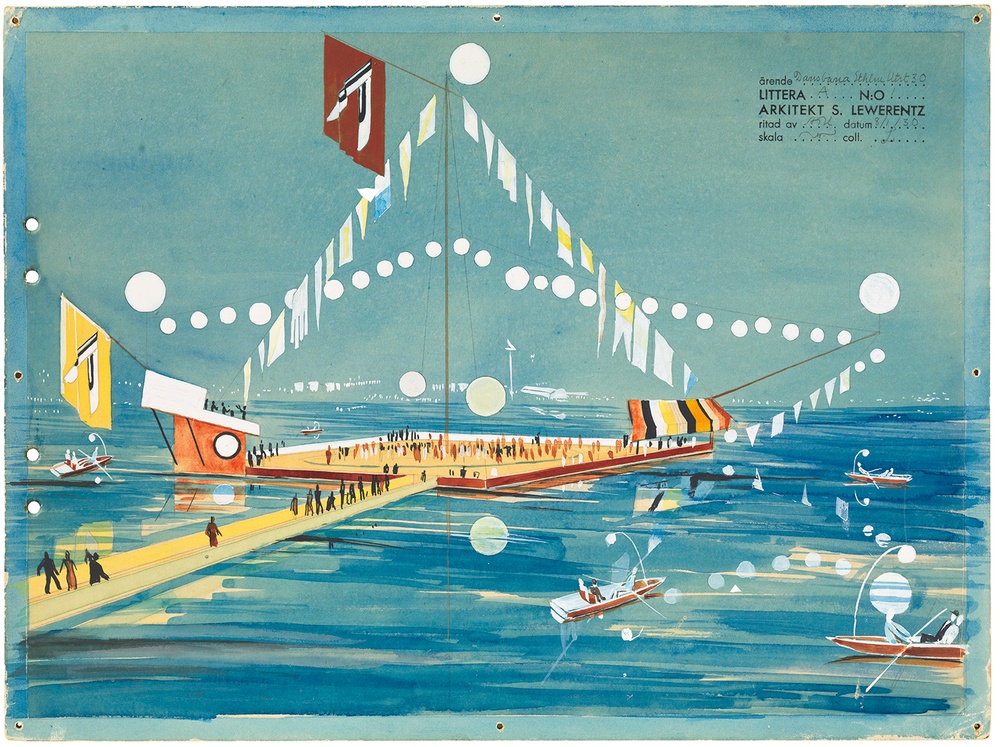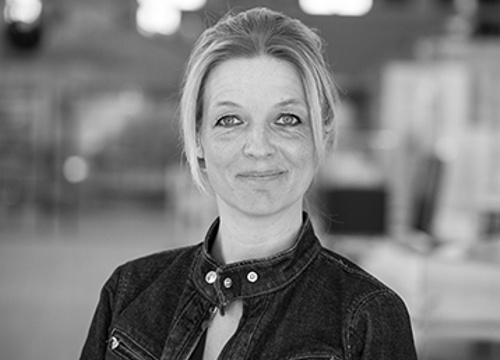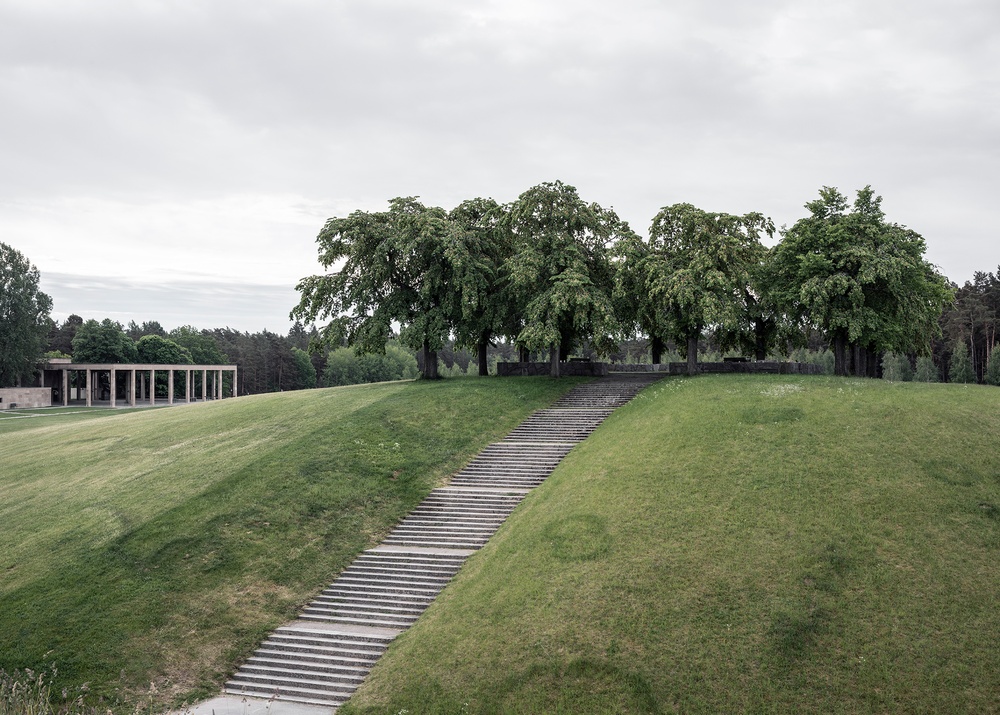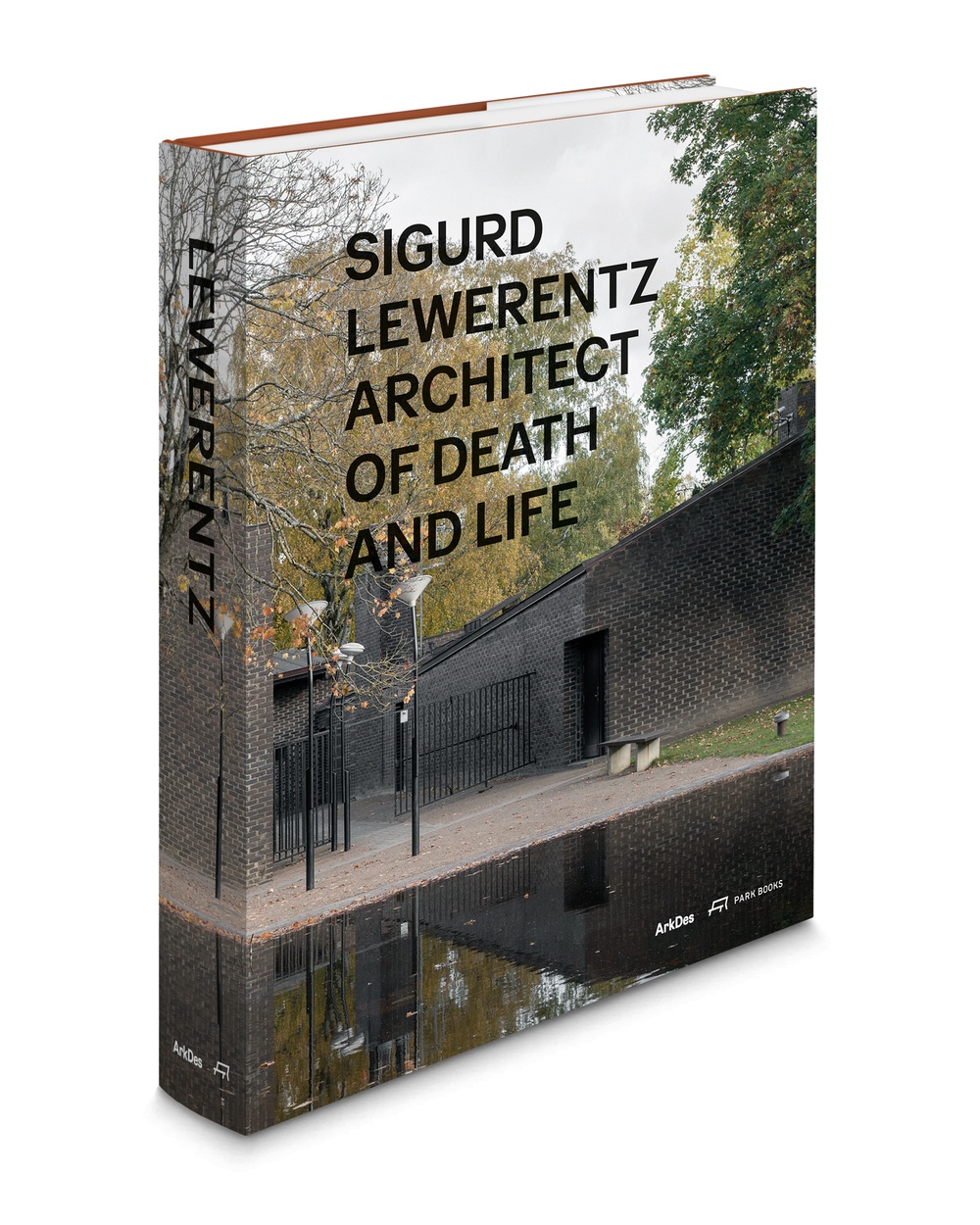Sweden´s most revered architect subject of major exhibition opening in Stockholm October 2021.
 Floating dance floor. Stockholm exhibition 1930. ArkDes collection.
Floating dance floor. Stockholm exhibition 1930. ArkDes collection.Sweden´s most revered architect subject of major exhibition opening in Stockholm October 2021. Accompanying monograph published May 2021.
Sweden’s most revered architect Sigurd Lewerentz, regarded as a giant of 20th century
architecture, is the subject of a major exhibition, Sigurd Lewerentz: Architect of Death
and Life with exhibition design by Caruso St John, opening at ArkDes, Sweden’s national centre for architecture and design in Stockholm, on 1st October 2021.
This will be a significant moment of assessment, the first major monograph exhibition of the work of Lewerentz since the 1980s including the publication of the most comprehensive to date biography, published in May 2021.
Lewerentz, who was born in Bjärtrå, Ångermanland in northern Sweden in 1885 and died in Lund 1975, is an enigmatic figure in the modern history of architecture. He rarely spoke publicly or published, but his influence is acknowledged by a generation of the world’s leading architects.
Meditation grove Almhöjden. The Woodland Cemetery, Stockholm. Cred: Johan Dehlin.
Kieran Long, Director of ArkDes and curator of the exhibition, said: “There is no Swedish architect with more influence on contemporary architecture today, or with more passionate advocates across the globe, than Sigurd Lewerentz. Devotees travel from everywhere in the world to see his buildings. There are very few architects in history with Lewerentz’s ability to make buildings that truly ask the biggest questions about what it means to be a modern person. His work powerfully evokes our deepest and most archaic cultural memories. But he was also fascinated by cosmetic and fleeting pleasures: Shopping, dancing, drinking and having dinner. The life of the city fascinated him and his work made a stage for our playful selves as well as our spiritual ones.”
Colin St. John Wilson, paraphrasing E.M. Forster’s impression of the Greek poet Constantine Cavafy, said it was “as if he stood at a slight angle to the world.”
In the words of Adam Caruso, designer of the exhibition: “Lewerentz’s late projects represent an unprecedented integration of making and thought. Like Matisse, who advised young painters to cut off their tongues and communicate with brush, paint and canvas, Lewerentz was famously laconic. He did not teach and few of his own project descriptions survive. He built.”
The exhibition and the book are the result of four years of research. The majority of the
objects in the exhibition are drawn from ArkDes’ own formidable collection, which will be
shown alongside hitherto unknown or never previously exhibited objects that have been
discovered in travels by the research team across the country.
The exhibition will cover the full range of Lewerentz’s works. Among these are three iconic projects: The Woodland Cemetery in south Stockholm, designed with Gunnar Asplund (1915-61), now a UNESCO World Heritage Site where many notable Swedish writers, musicians and actors are buried, including Greta Garbo, and his two late masterpieces, St Mark’s Church, in Bjorkhagen, completed in 1960; and St Peter’s Church, in Klippan, a town 60 kilometres north of Malmo, completed in 1966. The show will include a range of drawings of these famous buildings but also objects that show how Lewerentz’s collaborations with artists and theologians made buildings that were deeply literate and inventive about Christian traditions.
ArkDes will produce a landmark new book in connection with the exhibition, by far the
largest and most comprehensive ever written about Lewerentz. Designed by award-winning graphic designer Malmsten Hellberg and images by the architect and architectural photographer Johan Dehlin, it will contain over 700 pages of drawings, photographs and models, plus excerpts from Lewerentz’ personal archive and library. Sigurd Lewerentz: Architect of Death and Life is edited by Kieran Long, Johan Örn and Mikael Andersson, and is published by Park Books in collaboration with ArkDes.
Press Enquiries: Maria Östman, 073-273 36 00, maria.ostman@arkdes.se
Sigurd Lewerentz
Sigurd Lewerentz was born in the north of Sweden, in Bjärtrå, Västernorrland County, on 29 July 1885, the son of Gustaf Adolf and Hedvig Matilda Lewerentz. He initially trained as a mechanical engineer and an architect at the Chalmers University of Technology in Gothenburg and followed his education with apprenticeships in Berlin and Munich.
When Lewerentz set up an independent practice in Stockholm in 1911, he was joined by his colleague Torsten Stubelius. His first breakthrough came in 1915 when he was awarded first prize in the competition for a new cemetery in Stockholm (The Woodland Cemetery), a proposal created in collaboration with Gunnar Asplund. For the Woodland Cemetery, Lewerentz designed the neoclassical Resurrection Chapel, completed in 1925. A year following his success in the competition of 1915, he won first prize in the competition for a new cemetery in Malmö.
During the 1930s, while Lewerentz was working on the two cemeteries, he made major contributions to the Stockholm Exhibition of 1930 by way of buildings, furniture, and graphic design. Around this time he also realised two major office buildings in Stockholm. He started to design and produce steel windows and other architectural fittings, a side of his practice that gradually absorbed more and more of his time. In the 1940s, he set up his own factory for these purposes in Eskilstuna.
In the mid 1940s Lewerentz oversaw the completion of the Chapels of St. Knut and St. Gertrud, and the Malmö City Theatre – two projects that he had worked on for many years. His notoriety came with the late churches, however: St. Marks in Björkhagen (1960), and St. Peters in Klippan (1966). When Lewerentz died in Lund in 1975, he was regarded as a legend of Swedish architecture
About ArkDes (The Swedish Centre for Architecture and Design)
ArkDes is Sweden’s national centre for architecture and design. It is a museum, a study centre and an arena for debate and discussion about the future of architecture, design and citizenship.
Contacts

Maria Östman
- maria.ostman@arkdes.se
- +46 73 273 36 00

